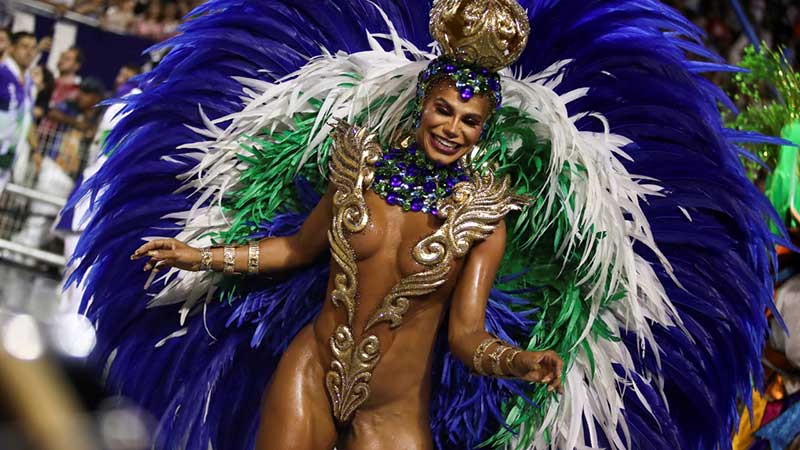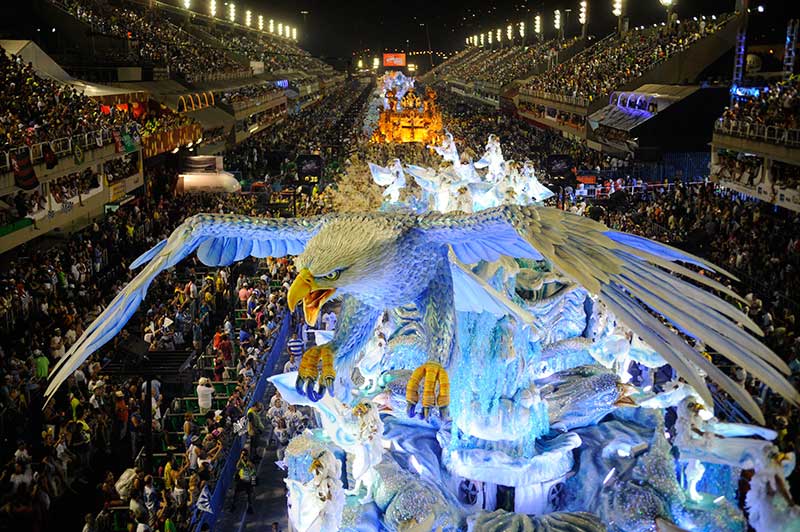 Rio Carnival is one of the most vibrant and renowned festivals in the world. Every year, millions of people from around the globe gather in Rio de Janeiro, Brazil, to participate in this grand celebration. The history of Rio Carnival dates back several centuries and is filled with cultural significance, captivating traditions, and an infectious spirit of joy. In this article, cupo will delve into the fascinating history of Rio Carnival, exploring its origins, evolution, and the elements that make it an unparalleled extravaganza of music, dance, and vibrant costumes.
Rio Carnival is one of the most vibrant and renowned festivals in the world. Every year, millions of people from around the globe gather in Rio de Janeiro, Brazil, to participate in this grand celebration. The history of Rio Carnival dates back several centuries and is filled with cultural significance, captivating traditions, and an infectious spirit of joy. In this article, cupo will delve into the fascinating history of Rio Carnival, exploring its origins, evolution, and the elements that make it an unparalleled extravaganza of music, dance, and vibrant costumes.
Origins of Rio Carnival
The roots of Rio Carnival can be traced back to the Portuguese colonization of Brazil. The festival draws inspiration from various cultural influences, including Portuguese, African, and Indigenous traditions. It originated as a pagan celebration known as “Entrudo,” which was brought to Brazil by Portuguese settlers in the 17th century. This early form of Carnival featured water fights, pranks, and playful street celebrations.Evolution of Rio Carnival through the Years
Over the centuries, Rio Carnival evolved and incorporated elements from different cultures. In the late 19th century, European-style masquerade balls and parades began to influence the festivities. African rhythms and dance styles also became an integral part of the celebration, brought to Brazil by African slaves. These diverse influences shaped the unique character of Rio Carnival, blending European refinement with African exuberance.Samba Schools: The Heartbeat of Rio Carnival
Samba schools emerged as the driving force behind the Rio Carnival in the early 20th century. These schools are social organizations representing different neighborhoods and communities. They bring together dancers, musicians, and artists to create elaborate performances for the Carnival parades. Samba schools dedicate months of preparation, crafting intricate choreography, and designing breathtaking costumes and floats.Parades, Floats, and Costumes
The parades during Rio Carnival are a feast for the senses. The main attraction is the Sambadrome parade, where the top samba schools showcase their elaborate presentations. Each school tells a unique story through music, dance, and visual spectacle. Gigantic floats adorned with intricate decorations glide through the parade route, accompanied by thousands of costumed performers. These costumes are often extravagant, featuring vibrant colors, feathers, sequins, and elaborate headpieces.
The Role of Samba Music
Samba music is the lifeblood of Rio Carnival. Its infectious beats and lively melodies create an irresistible energy that permeates the entire festival. Samba ensembles, comprising percussionists, singers, and instrumentalists, provide the rhythmic foundation for the parades and street celebrations. The pulsating rhythms of the drums and the soulful voices of the singers unite participants and spectators in a joyous celebration of Brazilian culture.Street Parties and Blocos
While the Sambadrome parades are the centerpiece of Rio Carnival, the festivities extend beyond the stadium. Street parties known as “blocos” take over the city, transforming Rio de Janeiro into a massive open-air celebration. Blocos are informal gatherings where revelers gather to sing, dance, and follow music bands through the streets. These street parties offer a more spontaneous and inclusive experience, allowing people of all backgrounds to participate in the Carnival spirit.Cultural Significance of Rio Carnival
Rio Carnival is more than just a dazzling display of music and dance; it holds deep cultural significance for the people of Brazil. It serves as a platform for artistic expression, promoting social cohesion, and preserving cultural heritage. The festival showcases Brazil’s rich diversity, fostering a sense of pride and unity among its citizens. It also boosts tourism and generates economic opportunities, contributing to the country’s cultural and economic growth.Challenges and Controversies
Despite its exuberance, Rio Carnival faces challenges and controversies. One of the major issues is the high cost of participation, which limits access for many Brazilians. Additionally, there have been concerns about cultural appropriation, as non-Brazilian elements sometimes find their way into the celebrations. The festival also requires extensive resources, including infrastructure and security, posing logistical challenges for organizers.When is the Best Time to Visit Taiwan?
Rio Carnival Today
Today, Rio Carnival continues to captivate the world with its grandeur and vibrancy. It has become a major tourist attraction, drawing visitors from all corners of the globe. The event has expanded beyond the borders of Brazil, inspiring similar celebrations in other countries. Rio Carnival has evolved into a global phenomenon that showcases Brazil’s cultural richness and serves as a testament to the power of human creativity and expression.The Global Influence of Rio Carnival
The impact of Rio Carnival extends far beyond Brazil’s borders. Its music, dance, and fashion have influenced artists and performers worldwide. The vibrant energy and infectious spirit of Rio Carnival have inspired the creation of similar festivals in cities like New Orleans, Sydney, and Notting Hill. The legacy of Rio Carnival transcends cultural boundaries, spreading the joyous essence of Brazilian culture to every corner of the globe.Conclusion
Rio Carnival stands as a testament to the indomitable spirit of the Brazilian people and their love for music, dance, and celebration. From its humble origins as a water fight festival to its current status as a global cultural phenomenon, Rio Carnival has evolved while preserving its vibrant traditions. It is a mesmerizing spectacle that captivates the senses and ignites the imagination. Rio Carnival continues to be a beacon of joy and unity, reminding us of the transformative power of cultural celebrations.What is the Unique Country Located within Another Country?
Nestled within the borders of Italy lies the enigmatic nation of San Marino, a strange country within foreign borders. Surrounded entirely by Italy, this microstate is Europe’s oldest surviving republic. With its stunning mountaintop location and rich history, San Marino serves as a captivating destination for travelers seeking a truly unique experience.
